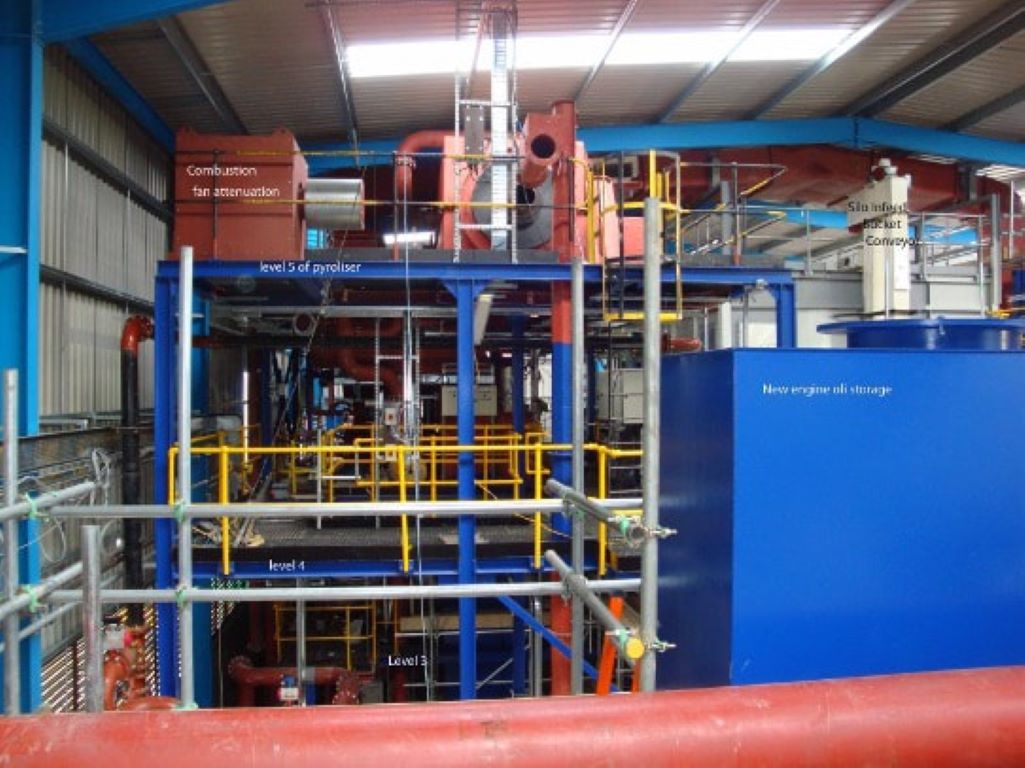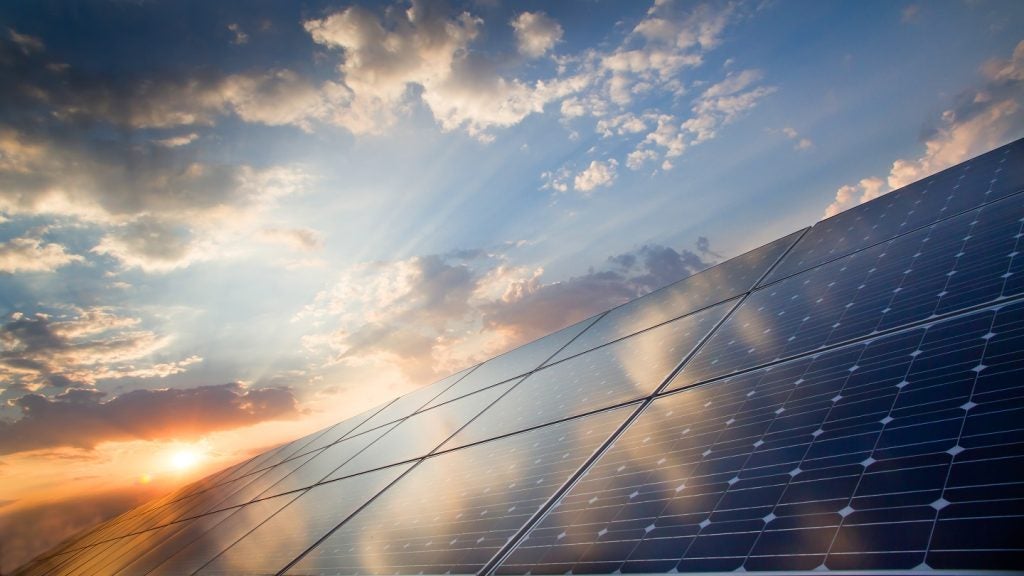
Aside from its environmental benefits, the energy transition promises to move power generation from using costly feedstocks with complex logistics chains toward using the natural, sustainable resources available everywhere. The economics of generation shift further when using a fuel with a negative cost, where generators are paid to solve a problem. This is the promise of waste-to-energy generation.
Some reports suggest that the value of the waste-to-energy market will surpass $70bn by 2030. However, this growth will depend on regulatory bodies and regional governments making significant pushes towards use waste-to-energy technologies.
How well do you really know your competitors?
Access the most comprehensive Company Profiles on the market, powered by GlobalData. Save hours of research. Gain competitive edge.

Thank you!
Your download email will arrive shortly
Not ready to buy yet? Download a free sample
We are confident about the unique quality of our Company Profiles. However, we want you to make the most beneficial decision for your business, so we offer a free sample that you can download by submitting the below form
By GlobalDataThe UAE has already made this push: the country’s first plant will turn 300,000 tonnes of non-recyclable waste into 30MW of energy. Following this, a consortium will develop a $1.1bn plant on a former landfill site, processing 1.9 million tonnes of waste per year for approximately 200MW of power.
This would make the facility one of the largest in the world, although its power generation capacity remains small compared other developments in a similar investment tier. Still, the technology proliferates, as waste-to-energy represents perhaps the only type of generation where plants receive payment for accepting their fuel.
Dan Nienhauser, founder and CEO of US-based waste-to energy company Stellar3, tells us that the industry could become a multi-trillion dollar market by 2050, but that first, some perceptions must change.
Smruthi Nadig: How difficult would it be to implement energy generation through waste at scale?
Dan Nienhauser: Change is never “easy,” and we have been a fossil fuel-focused world for many decades. But using waste to generate energy is easily achievable, and in the past 1-2 years, it has emerged as a reliable and profitable opportunity. In addition to being profitable and environmentally friendly, waste-to-energy methods also improve waste management.
Among the most prominent current waste transformation methods [are] pyrolysis, which uses waste materials such as plastics or biomass. In pyrolysis, these are thermally broken down in the absence of oxygen. Alternatively, gasification involves converting waste materials into synthetic gas [syngas] through chemical reactions. Syngas can be used to generate electricity or for the production of chemicals and fuels. Although gasification is more environmentally friendly than incineration, it requires advanced infrastructure and expertise.
The ease of implementation, however, varies according to the method, scale, and local conditions. While some methods, like landfill gas capture, are relatively simple to implement, others, like gasification and pyrolysis, require more advanced infrastructure.
Emerging technologies and concepts offer promising alternatives, but scalability, cost, and efficiency remain challenges.
SN: What kind of investments would the waste-to-energy market need to grow by 2030?
DN: Several factors are expected to drive significant growth in the waste-to-energy market in the coming years, including increased waste generation, public shareholder consideration, the need for sustainable waste management solutions, stringent environmental regulations, and the global push to reduce greenhouse gas emissions and use renewable energy. Through 2025-2030, many reports anticipate a compound annual growth rate of around 4-6% for the waste-to-energy market. The waste transformation [can] become a global multi-trillion dollar market by 2050.
For the construction and operation of waste-to-energy facilities, substantial capital investment is required. The development and deployment of waste-to-energy projects can be supported by public and private funding, such as grants, loans, and equity investments.
A clear and supportive policy framework and favourable regulations are essential for promoting waste-to-energy projects. Among these are waste management regulations [prioritising] waste-to-energy over landfilling, renewable energy targets that recognise waste-to-energy as a viable, renewable energy source, and emissions standards that encourage cleaner technologies.
Stakeholder engagement and public awareness campaigns can address potential concerns related to health, safety, and environmental impacts. To track the performance, environmental impact, and return on investment of waste-to-energy projects, monitoring and evaluation systems must be established. As a result, future projects can be informed [of this data], policy development can be enhanced and supported, and further investment can be attracted.
SN: How can industries reduce emissions by transitioning to waste-to-energy technologies?
DN: Major industries can and should adopt waste-to-energy technologies. Producing energy from the waste streams from large-scale industries can provide multiple benefits, such as reduced disposal costs, lower greenhouse gas emissions, and a more sustainable energy supply.
An industrial symbiosis occurs when waste or byproducts from one industry become resources for another. As a result, waste-to-energy technologies can be used more efficiently, and a circular economy can be created. The excess heat from an industrial process can be used to generate electricity or to heat another facility. Tax breaks, grants, and low-interest loans are often available to industries as incentives for adopting cleaner technologies.
SN: How significantly could energy generation through waste impact the environment?
DN: As waste is managed, greenhouse gases are often overall reduced and resources are conserved, so waste energy generation can have a significant positive impact on the environment.
Capturing methane from landfills or anaerobic digesters prevents it from being released into the atmosphere as a potent greenhouse gas. Waste-to-energy processes can contribute to a more sustainable waste management system by converting waste into valuable products such as electricity, heat, or fuel. In a circular economy, waste is minimised, and resources are conserved by continuously recovering, reusing, and recycling.
Industries and communities can reduce their reliance on fossil fuels, while local economies can also benefit from energy sales or tipping fees. By supporting sustainable development and community engagement in environmental initiatives, these socio-economic benefits can indirectly contribute to community value enhancement and environmental protection.
It is important to note that waste-to-energy technologies can also have some negative environmental impacts if not properly managed or regulated. Without proper emission control measures, incineration facilities can release pollutants and toxic substances like dioxins and furans. Waste-to-energy projects may not always be the most sustainable solution for certain waste streams, such as recyclable materials, which could be better utilised through recycling and reuse.
SN: The UK has seen several planned waste-to-energy facilities fail at the planning stage. How does energy generation through waste fit in the UK?
DN: In the UK, waste management and sustainable energy policy are important priorities. Landfill capacity is limited, and waste-to-energy technologies can reduce the amount of waste sent to landfills.
The UK has set ambitious climate change mitigation targets, including a net-zero emissions goal by 2050. Waste-to-energy contributes to the UK’s low-carbon transition by capturing methane from landfills or converting waste into clean energy.
Waste-to-energy projects will provide a reliable domestic [energy source] for the UK, [enhancing] its energy security. By reducing reliance on imported fossil fuels and increasing the diversity of the energy mix, the energy system is more resilient to supply disruptions or price fluctuations.
Finally, waste-to-energy technologies provide the UK with a range of benefits that address environmental, social, and economic concerns. The UK can contribute significantly to a more sustainable future by investing in and promoting these technologies, improving waste management practices, supporting climate change mitigation efforts, and stimulating economic growth.
SN: In some instances, plastics and other oil-based wastes burned for energy production release greenhouse gases. How will this control carbon emissions?
DN: While chemical recycling and thermal transformation of waste are often referred to as incineration, pyrolysis does not involve burning. In pyrolysis, plastics are heated in oxygen-free, vacuum-sealed environments to avoid combustion, preserving energy and economic value. As a result of pyrolysis and gasification, solids and liquids become gases, and plastics are then broken down into shorter . When necessary, these can be separated and purified into circular raw materials that can be used again.
Via pyrolysis, waste-to-liquid fuels can substantially reduce carbon emissions by fossil fuel companies. Using chemical recycling to convert plastic and petroleum waste into refined fossil fuels reduces the full scope of CO2 emissions.
Island nations face the added challenge that land is usually a limited resource. When landfill expansion is not possible, waste ends up in our oceans. Marine ecosystems such as coastal wetlands and seagrass meadows sequester carbon, impacting the Earth’s climate. Plastic pollution and oil contamination can degrade these ecosystems and reduce their carbon storage capacity.






